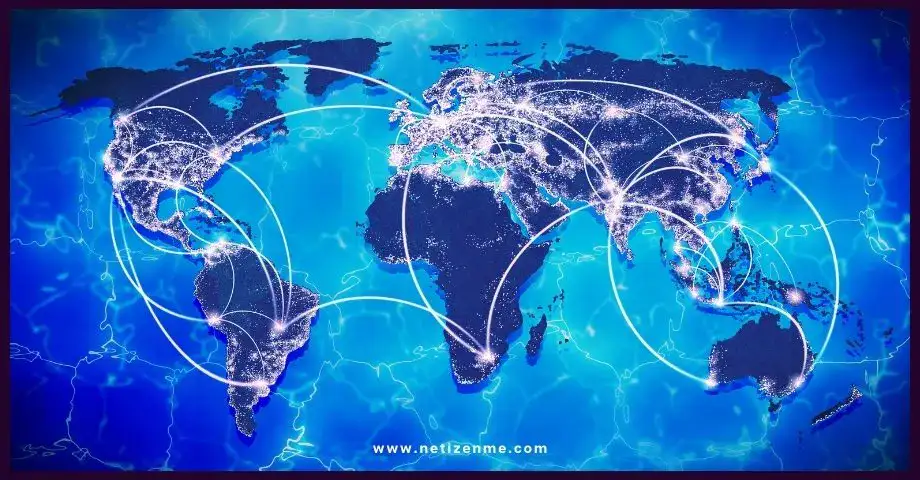Supranationalism, a concept deeply embedded in international relations and governance, represents a unique form of cooperation that transcends traditional state boundaries. This essay aims to provide a comprehensive exploration of Supranationalism, delving into its definition, historical evolution, key characteristics, and implications in the contemporary global landscape.
What is Supranationalism?
Supranationalism, characterized by the delegation of authority beyond national borders to achieve common goals, has become a pivotal force in shaping international cooperation and addressing shared challenges.
Definition and Conceptual Framework of Supranationalism
Supranationalism encapsulates the delegation of authority beyond the confines of individual national governments. This intricate concept comprises key components that distinguish it from traditional governance structures. Shared sovereignty, emblematic of supranationalism, involves member states relinquishing certain powers in favor of collaborative decision-making. The foundation of this system lies in the collective decision-making process, fostering consensus through diplomatic negotiations. Additionally, supranationalism is characterized by the establishment of common institutions that serve as frameworks for multilateral dialogue and cohesive action on shared objectives.
Historical Evolution
Supranationalism emerged as a response to the aftermath of World War II, marking a pivotal shift in global governance. The European Union (EU) stands out as a pioneering example of supranational cooperation, evolving from the European Coal and Steel Community established in 1951. This marked the beginning of a supranational approach to economic and political collaboration, aiming to prevent future conflicts through shared resources and decision-making.
The reach of supranationalism extends beyond the borders of Europe, with prominent examples found in regions such as Southeast Asia and South America. The Association of Southeast Asian Nations (ASEAN) and the Southern Common Market (Mercosur) exemplify how supranational organizations have become integral to fostering regional cooperation and addressing shared challenges. These examples underscore the adaptability of supranationalism as a model for enhancing collaboration on a global scale.
Key Characteristics of Supranationalism
Shared Sovereignty
Within the framework of supranationalism, shared sovereignty involves the intentional relinquishment of certain powers by member states. This deliberate act reflects a collective commitment to pooling resources and authority to achieve common objectives. The essence of shared sovereignty lies in the recognition that addressing complex challenges and pursuing mutual benefits often requires a collaborative approach that transcends traditional national boundaries. In this context, member states voluntarily cede aspects of their individual sovereignty to a collective entity, thereby fostering a sense of interdependence and shared responsibility. This intricate interplay of shared sovereignty forms the cornerstone of successful supranational initiatives.
Collective Decision-Making
Supranationalism hinges on the principle of collective decision-making, a dynamic process characterized by consensus-building and diplomatic negotiations. In the realm of supranational governance, decisions are not unilaterally imposed by individual member states; instead, they emerge through a collaborative effort to find common ground. Consensus-building becomes the linchpin of this process, requiring diplomatic finesse and negotiation skills.
Supranational institutions, established to facilitate this collective decision-making, serve as arenas for multilateral dialogue. These institutions provide platforms where representatives from member states engage in discussions, negotiations, and deliberations. The goal is to reach agreements that harmonize diverse national interests, reflecting a commitment to shared objectives. The emphasis on collective decision-making underscores the cooperative nature of supranational governance and the recognition that addressing complex challenges necessitates joint efforts and mutual understanding.
Common Institutions
The establishment of common institutions is a fundamental aspect of supranationalism, fostering cohesion and integration among member states. This involves the development of specific supranational bodies designed to facilitate collective governance and decision-making. Notable examples include the European Commission and the European Parliament within the context of the European Union.
Supranational bodies like the European Commission play a pivotal role in the implementation and enforcement of collective decisions. The Commission, as an executive branch, operates independently of individual member states, focusing on the common interests and objectives defined by the supranational framework. Similarly, the European Parliament serves as a legislative body representing the interests of the supranational community, emphasizing the integration of diverse perspectives in the decision-making process.
These common institutions form institutional frameworks that promote cohesion and integration among member states. By providing structures for collaboration and coordination, these institutions contribute to the effective functioning of supranational entities, ensuring that the shared goals and principles are upheld across the diverse spectrum of member nations.
Regional Examples of Supranationalism
01. European Union (EU)
The European Union (EU) stands as a pivotal example of supranationalism, evolving from the European Coal and Steel Community to its present form. This transformation represents a historical trajectory marked by increasing integration and shared governance.
The journey of the EU began with the establishment of the European Coal and Steel Community in the aftermath of World War II. The primary objective was to unify the coal and steel industries of member states, laying the groundwork for economic cooperation. Over time, this cooperative initiative expanded beyond its initial scope, gradually evolving into the European Economic Community and eventually crystallizing into the European Union.
Key features of the EU’s supranational structure include the creation of a single market. This market eliminates internal barriers to the free movement of goods, services, capital, and labor among member states. The introduction of a common currency, the Euro, further exemplifies the depth of economic integration, symbolizing a shared monetary policy and fostering financial cohesion.
Additionally, the Schengen Agreement embodies the spirit of borderless cooperation within the EU. This agreement allows for passport-free travel across participating member states, emphasizing the commitment to open borders and the removal of internal obstacles to movement. The Schengen Area, a tangible outcome of supranational collaboration, represents a significant stride toward a unified and interconnected Europe.
The EU’s trajectory from its initial foundations to the establishment of a single market, common currency, and border-free travel illustrates the tangible outcomes of supranationalism in fostering economic, political, and social integration among European nations.
02. ASEAN (Association of Southeast Asian Nations)
The Association of Southeast Asian Nations (ASEAN) serves as a notable example of supranational collaboration outside the European context. Founded in 1967, ASEAN has aimed to promote regional cooperation among its member states, demonstrating shared sovereignty and the pursuit of common objectives.
The primary objectives of ASEAN include fostering economic growth, social progress, and cultural development. Through shared sovereignty, member states relinquish certain powers to facilitate collective decision-making, emphasizing the importance of collaboration to address regional challenges. The principles of ASEAN include mutual respect for sovereignty, non-interference in internal affairs, and peaceful conflict resolution, creating a framework for regional cooperation that respects the autonomy of individual member states.
Challenges within ASEAN arise from the diverse socio-political landscape of member countries. Historical tensions, economic disparities, and political differences pose obstacles to deeper integration. Despite these challenges, the organization continues to work towards greater cohesion, recognizing that the benefits of collaboration outweigh the difficulties.
The prospects for deeper integration within ASEAN rest on addressing these challenges through diplomatic negotiations and consensus-building. Collective decision-making, a core component of supranationalism, plays a crucial role in overcoming hurdles and advancing the organization’s objectives. As ASEAN navigates its path, the commitment to shared sovereignty remains fundamental to its success in fostering regional stability and prosperity.
03. Mercosur (Southern Common Market)
Mercosur, or the Southern Common Market, stands as a significant example of supranationalism in South America. Established in 1991, Mercosur was founded with the primary goal of promoting economic integration and cooperation among its member states.
The economic integration within Mercosur involves the removal of trade barriers, the establishment of a common external tariff, and the coordination of economic policies among member countries. This shared economic framework reflects the principle of shared sovereignty, where member states pool resources and authority to achieve common objectives. The pooling of economic resources is intended to enhance the collective bargaining power of Mercosur in the global market.
In addition to economic goals, Mercosur addresses regional issues through collective efforts. This includes addressing challenges related to infrastructure, environmental sustainability, and social development. The shared commitment to tackling these challenges exemplifies the collective decision-making process inherent in supranational organizations.
However, Mercosur, like any supranational entity, faces challenges. Differing economic priorities, political tensions, and variations in development levels among member states can hinder the seamless integration envisioned by the organization. Overcoming these challenges requires diplomatic negotiations and consensus-building, emphasizing the importance of multilateral dialogue in addressing regional issues.
As Mercosur navigates the complexities of supranational cooperation, the development of common institutions becomes crucial. These institutions, such as the Mercosur Parliament and the Common Market Council, provide institutional frameworks that promote cohesion, integration, and effective decision-making.
Implications and Challenges
01. Economic Integration
Economic integration is a core component of supranationalism, promoting collaboration among member states to achieve common economic objectives. In the context of organizations like Mercosur, the pursuit of a common market comes with both advantages and challenges.
Advantages of a Common Market:
One of the primary advantages of establishing a common market within Mercosur is the facilitation of free trade among member states. By eliminating trade barriers such as tariffs and quotas, countries within the organization can engage in more seamless economic transactions. This fosters increased economic activity, stimulates growth, and expands market access for businesses across borders.
Furthermore, a common market allows for the efficient allocation of resources. Member states can specialize in the production of goods and services in which they have a comparative advantage, leading to overall economic efficiency. This specialization contributes to increased competitiveness on the global stage.
The establishment of a common currency, similar to the Euro in the European Union, can further streamline economic transactions within Mercosur. A shared currency eliminates exchange rate uncertainties, simplifying trade and investment activities among member countries.
Economic Disparities and Challenges in Achieving Equitable Growth:
Despite the potential advantages, the path to economic integration is not without challenges. Economic disparities among member states can pose significant hurdles to achieving equitable growth. Varying levels of economic development, industrialization, and infrastructure can create imbalances, impacting the ability of less developed countries to fully participate in and benefit from the common market.
The challenge of equitable growth becomes particularly relevant when considering the impact on smaller economies within Mercosur. These nations may face difficulties competing with larger, more developed counterparts, potentially leading to disparities in economic outcomes.
Additionally, the harmonization of economic policies and regulations across member states is a complex task. Differences in legal systems, labor markets, and regulatory environments can impede the smooth functioning of a common market. Overcoming these challenges requires sustained efforts in diplomatic negotiations, consensus-building, and the establishment of supranational institutions to ensure effective coordination.
02. Political Cooperation
Political cooperation is a fundamental aspect of supranationalism, emphasizing the strengthening of diplomatic ties among member states. Within organizations like Mercosur, achieving effective political cooperation requires careful navigation to balance national interests with overarching supranational objectives.
Strengthening Diplomatic Ties:
One of the primary goals of political cooperation within Mercosur is the enhancement of diplomatic ties among member states. This involves fostering mutual understanding, trust, and collaboration to address regional challenges and opportunities. Regular diplomatic dialogues and consultations create a platform for member states to engage in open discussions, exchange ideas, and work towards common goals.
Strengthened diplomatic ties contribute to the resolution of political disputes through peaceful means. The emphasis on dialogue and diplomacy promotes stability within the region, reducing the likelihood of conflicts that could undermine the supranational framework. By fostering a spirit of cooperation, member states can collectively address political challenges, promote regional peace, and project a unified voice on the global stage.
Balancing National Interests with Supranational Objectives:
Achieving effective political cooperation within Mercosur requires a delicate balance between national interests and supranational objectives. Member states, each with its unique political landscape and priorities, must find common ground to advance shared goals. This entails a willingness to compromise and prioritize collective interests over purely national concerns.
The establishment of supranational institutions, such as the Mercosur Parliament and Secretariat, plays a crucial role in facilitating political cooperation. These institutions serve as platforms for member states to engage in multilateral discussions, coordinate policies, and implement decisions collectively. Through these mechanisms, political cooperation becomes more than a theoretical ideal; it transforms into tangible actions that benefit the entire region.
03. Sovereignty Concerns
Addressing sovereignty concerns is a critical aspect of supranationalism within organizations like Mercosur. Member states often express criticisms and reservations, highlighting the challenge of finding a delicate balance between national autonomy and collective governance.
Criticisms and Reservations from Member States:
Sovereignty concerns manifest as criticisms and reservations voiced by member states within Mercosur. Some argue that certain decisions and policies formulated at the supranational level may infringe upon their national sovereignty. These concerns arise when member states perceive that the supranational entity is overstepping its bounds or making decisions that significantly impact their domestic affairs.
Common criticisms include the fear of diminished control over economic policies, immigration regulations, and other key national issues. Member states may express reservations about ceding authority to supranational institutions, especially when they feel that their unique circumstances are not adequately considered in decision-making processes.
Finding a Balance Between National Autonomy and Collective Governance:
Addressing sovereignty concerns requires finding a delicate balance between maintaining national autonomy and embracing collective governance. Mercosur, as a supranational organization, must navigate these concerns to ensure the continued commitment and participation of member states.
One approach involves establishing clear guidelines and principles that safeguard the sovereignty of individual member states. The development of mechanisms for transparent decision-making, consultation, and consensus-building helps alleviate concerns about potential encroachments on national autonomy. Additionally, reinforcing the idea that supranational actions are driven by shared goals and mutual benefits enhances the credibility and acceptance of collective governance.
Efforts to address sovereignty concerns should involve open dialogue and continuous engagement with member states. Providing mechanisms for member states to voice concerns, propose solutions, and actively participate in decision-making processes fosters a sense of ownership and collaboration. This approach transforms sovereignty concerns into opportunities for strengthening the collective resilience of Mercosur.
Contemporary Relevance of Supranationalism
Supranational cooperation emerges as a linchpin in addressing global challenges that necessitate collective action. Whether combating climate change or responding to transnational threats, these entities provide the mechanisms through which nations can pool resources, share expertise, and formulate joint strategies. As the world grapples with increasingly complex challenges, the role of supranational cooperation becomes even more critical in fostering a safer and more sustainable global future.
Supranationalism’s role in international organizations, particularly within the UN, reflects a commitment to addressing global challenges collaboratively. Whether through peacekeeping missions, global governance initiatives, or fostering regional stability, supranational entities provide a framework for nations to work together toward common goals. As the world continues to grapple with complex issues, the importance of such collaborative models becomes increasingly evident in promoting peace and stability on a global scale.
What is supranationalism?
In conclusion, supranationalism stands as a dynamic and evolving concept that has redefined the traditional boundaries of statehood and governance. From its historical roots in post-World War II Europe to its contemporary manifestations in various regions, supranationalism represents a pragmatic response to shared challenges. As the world continues to grapple with global issues that transcend national borders, understanding and harnessing the potential of supranational cooperation becomes increasingly vital for fostering a more interconnected and harmonious international community.
Resources
- “The Oxford Handbook of International Organizations” by Jacob Katz Cogan, Ian Hurd, and Ian Johnstone.
- “The European Union: Politics and Policies” by Jonathan Olsen and John McCormick.
- “Global Governance: Why? What? Whither?” by Thomas G. Weiss.
- “The Review of International Organizations” – A peer-reviewed journal covering various aspects of international organizations and supranationalism.
- “Journal of European Public Policy” – Focuses on European governance and policies.
- “Supranationalism” – Stanford Encyclopedia of Philosophy. Available at plato.stanford.edu.
- “The European Union as a Supranational System” – European Institute. Available at europeaninstitute.org.
- “Global Governance and the Emergence of Global Institutions for the 21st Century” – World Economic Forum. Available at weforum.org.
- “ASEAN Community Vision 2025” – ASEAN Secretariat. Available at asean.org.
This article is written by:
This article is written and edited by in-house writers and editors. Knowledge Netizen editorial team is committed to providing accurate and informative content. You can cite our articles under the author name "NetizenMe"





